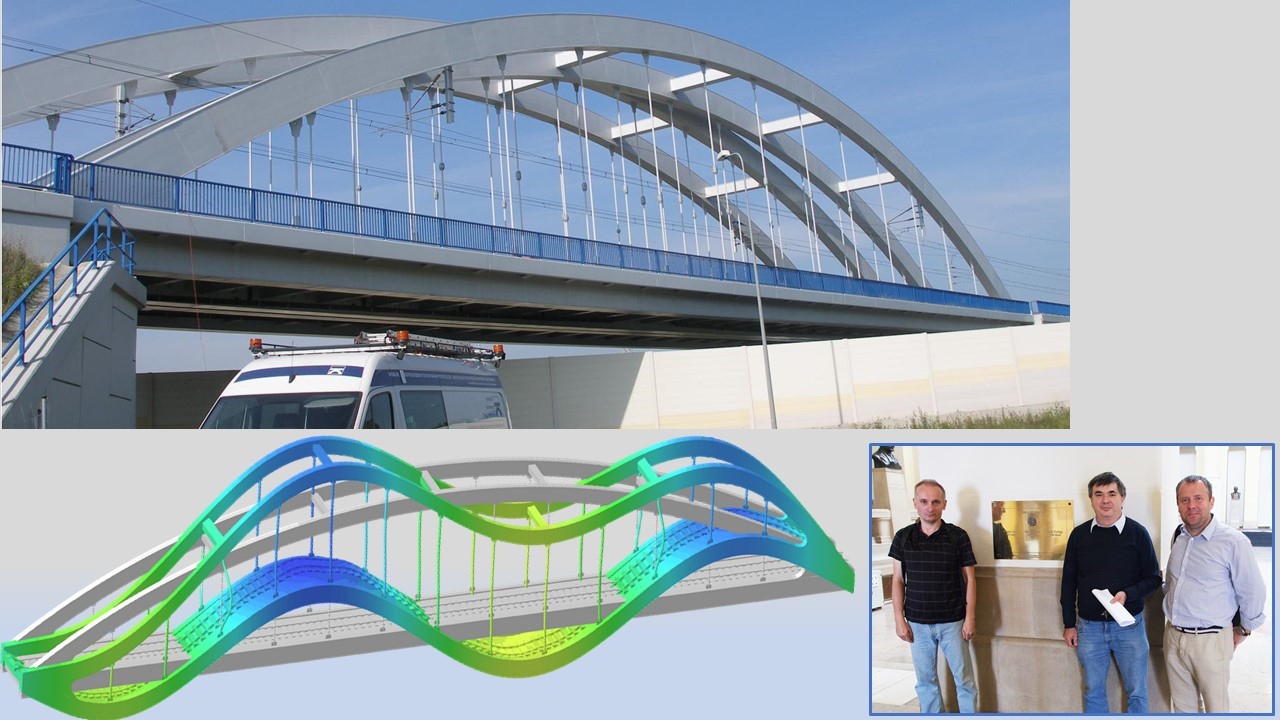IPPT PAN has received funding from the Visegrad Fund. The Fund supports the cooperation of the Visegrad Group countries, that is of the Czech Republic, Hungary, Poland and Slovakia, as well as Ukraine, and supports their integration with the European Union.
Within the Fund, grants are categorized into various sizes (small, standard and strategic) and programmes (scholarship, arts and university). They provide support in the four main categories: innovation, regional development, youth, and sustainable development, all within the region.
IPPT PAN coordinates the Visegrad Fund project for the first time. The project is titled: “Development of regional network on autonomous systems for structural health monitoring” and is scheduled to be carried out from 01/06/2021 to 30/11/2022. It encompasses the cooperation between four science teams from four countries: Poland, Hungary, the Czech Republic and Slovakia.

The Consortium is formed by:
- IPPT PAN, Poland, project coordinator
- Budapest University of Technology and Economics
- VSB - Technical University of Ostrava, the Czech Republic
- University of Žilina, Slovakia
In the IPPT PAN part, the project is carried out by dr. hab. Bartłomiej Błachowski (project leader) from the Department of Intelligent Technologies, Division of Safety Engineering, and by dr. Piotr Tauzowski, Department of Information and Computational Science, Division of Computational Materials Science.
The goal of the project is the development of a methodology for reliable identification of different structural defects, including concrete cracks, spalling and delamination. In its basic idea, this project combines machine learning and image processing techniques to localize and quantify stiffness degradation within concrete structures. The overall system is intended to operate in a fully autonomous way. It is allowed by recent advancement in image capturing utilizing the unmanned ground or aerial vehicles and artificial intelligence.

The problem: There are approximately 300,000 concrete bridges in the European Union. Ageing civil infrastructure requires continuous structural assessment to assure its safe and reliable operation. Especially, concrete bridges constitute a group of structures, which is prone to various type of failures including concrete cracks and spalling. To maintain such structures in good condition periodic visual inspections are conducted by specially trained personnel. However, these inspections have two significant drawbacks. Firstly, they are labour-intensive and cost-consuming and secondly evaluation of the current condition of the structure depends on the experience of the inspector. Vibration-based structural health monitoring systems suffer from low sensitivity to realistic failures and becomes useful at relatively large damages only, which can make them impractical from the engineering point of view. Nondestructive methods allow to identify much smaller damages at their early stage, however, the prior knowledge about the location of the damage is required. With the rapid development of unmanned aerial vehicles, drones can be utilized for bridge inspections. However, the drone has usually to be remotely controlled by a pilot from the ground. In conclusion, none of the currently used methods provides autonomous and efficient bridge inspection. This project aims to integrate condition monitoring and remaining life prediction for a more automated and economic way for management of civil infrastructure.
The methodology: Deep learning techniques (DL) enable automatic extraction of image features by using convolutional neural networks. Within the proposed research and innovation project we are going to develop an efficient and economic system for autonomous inspections of concrete bridge structures. The system consists of autonomous vehicle (operating on the road or in the air), optical camera providing high-resolution images and computer software utilizing modern image processing algorithms able to identify crack existing on the bridge surface. The above-mentioned system will be trained based on the most frequently occurring damages in concrete structures provided by partners from the Czech Republic and Slovakia. The concept of a mobile system for autonomous inspection including motion and tracking will be developed by Hungarian researchers working on problems related to autonomous transportation and image processing.
Innovation: The novelty of the proposed methodology is twofold. First of all, the structural health monitoring system will be enriched with remaining life prediction. Machine learning techniques used for crack detection with aid of image analysis will be enhanced by the physics-based models of damage propagation. Afterwards, using reliability analysis remaining useful life of the structure will be estimated based on the non-linear modelling of concrete fracture experiments and feasible corrosion initiation and propagation models The numerical assessment of concrete behaviour will be tested under the ATENA Science software that has both chloride ingress as well as non-linear fracture models and/or in-house Matlab-based codes. Secondly, experimentally acquired information about the current condition of the bridge structure will be integrated with Bridge Information Model (BrIM). The aim is to evaluate the possibility of a realistic model preparation of the overall bridge and simulate its future behaviour under various environmental conditions such as wind, humidity or susceptibility to ground motion via pilot BrIM model. Contrary to traditional bridge inspections, the newly proposed computer vision-based system is intended to operate in fully autonomous way, which reduces two drawbacks: human labour required for inspection and its cost. More importantly continuous health monitoring can be a valuable tool to prevent catastrophic failures similar to the one experienced for Polcevera Viaduct in Genoa (2018).















